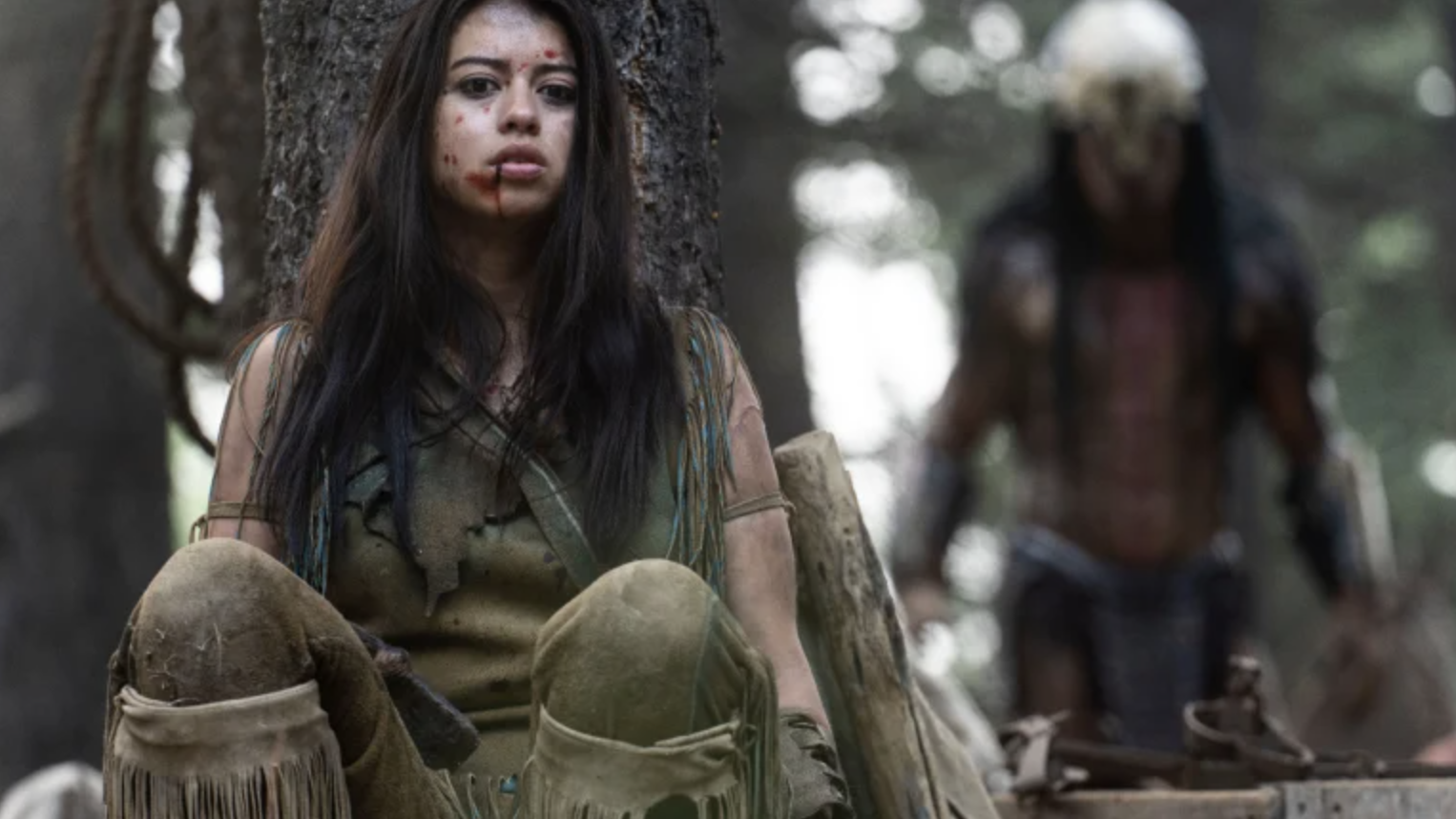PREY
Directing: B+
Acting: B+
Writing: B+
Cinematography: B+
Editing: A-
Special Effects: B
There are so many fascinating things about the film Prey, streaming on Hulu since August 5, it’s hard to know where to start. It’s a historic production in multiple ways: the cast consists of Comanche characters who are played by Indigenous American actors; producer Jhane Myers is a member of the Comanche tribe; the cast returned for voice-over dubs to make it possible to watch the entire film in the Comanche language.
In other words, regardless of it being the seventh film to feature long-worn usage of a specific alien creature from a 35-year-old intellectual property, Prey is worthy of our attention due to it being a story about Indigenous people, featuring Indigenous actors, with a large number of Indigenous crew members. This movie offers a kind of authenticity you would never expect from the seventh in a franchise, which is by most accounts by a large margin the best of them.
My only legitimate issue, if you want to call it that, is that it even had to be part of the Predator franchise. But, this is the IP world we live in now: grafting an original idea, about a young Indigenous woman who defies gender norms to prove herself a warrior, onto pre-existing IP was how to get the movie made. Personally, I would have preferred a stand-alone movie, even if it had to feature an alien predator, with a totally different alien. There was not reason not to make it more original a story, except to catch the attentions of longstanding franchise fans, who are the only audiences action movies court anymore.
I suppose there’s also the fact of director Dan Trachtenberg—who previously caught attention with the 2016 film 10 Cloverfield Lane—being a white guy. Being so openly proud of a production providing so many opportunities for peope of color, but still having a white man in the top leadership position, does not provide for the best optics. All I can say is that this is mitigated, at least somewhat, by Indigenous people on the production team—some in notable leadership positions themselves—providing consultation on authentic depiction of Comache society.
In fact, I found myself wondering about the significant overtones of patriarchy in the Indigenous family being depicted. That element of the original idea for this film is still very much present, and after hearing so often about matriarchy among Indigenous societies, I wondered how authentic that element really was. Well, as it happened, not all Indigenous tribes were matriarchal: according to this source, “The Comanches had a highly gendered hierarchy. Since they were a nomadic people who sustained themselves through hunting and territorial warfare, both male occupations, men naturally usurped the primary power roles. Unlike the Caddos and Wichitas, Comanche families were patriarchal.”
Granted, I could find other online sources that only vaguely, rather than spefically, corroborate that statement. But, it’s certainly what Prey reflects, in a surprisingly gripping—and, at only 99 minutes, mercifully brisk—movie about a young woman named Naru (Amber Midthunder, who is fantastic) who proves her worth as a warrior to her dismissive brother Taabe (Dakota Beavers, also great) and other male relatives by taking down a Predator alien in early-18th century Great Northern Plains.
And there is great juxtaposition here, between the Predator’s advanced alien technology and weapons, against an Indigenous tribe and what many might be tempted to consider “primitive” tools and weapons. Except these people are far more in tune with their natural environment than anyone today could hope to be, which makes them look deceptively simple, but ultimately more dangerous than anticipated, to the Predator.
There are even several gripping action sequences that don’t involve the Predator—until they do. But in the first third or so of Prey, Naru is eager to hunt a cougar thought to have injured one of their tribe. And indeed, there is a perilous encounter with a cougar, and later with a bear, the latter being arguably the most tense sequence in the film. The downside to these sequences is the clearly low budget CGI, rendered well enough except that it is exceedingly obvious that no actual animals were on set during the filming. (Not that there should be. But, with better visual effects, it would look convincingly like there was.) The redeeming element here is the taut script, written by Patrick Aison in his feature film writing debut and with a co-writing “Story By” credit to Trachtenberg, makes the CGI easy to overlook. Prey features a good story told skillfully by a crew of amply talented writers, producers, editors, actors, cinematographer and director.
In fact, cinematographer Jeff Cutter (who also shot 10 Cloverfield Lane) deserves to be called out by name, framing beautiful vistas throughout the film, whether for quieter sequences or the tenser action sequences. Even with the imperfect (but still serviceable!) CGI, Prey always looks great.
Combine that with tight story construction, with just the right about of foreshadowing so that threads click comfortably into place as the narrative unfolds, and you’ve got an eminently entertaining film—which really should have been given a theatrical release. Given that Prey is easily the best “Predator movie,” it’s unfortunate that a streaming-only release might deny it the attention it deserves and might otherwise have gotten. It’s the biggest reason I’m reviewing it now: I want you to know about it. Many people would be understandably suspicious that a prequel 35 years into a franchise’s existence could possibly be good, but rest assured, it’s worth a look.
Who is the predator, and who is the prey? Watch and find out! No, really. You should watch.
Overall: B+

